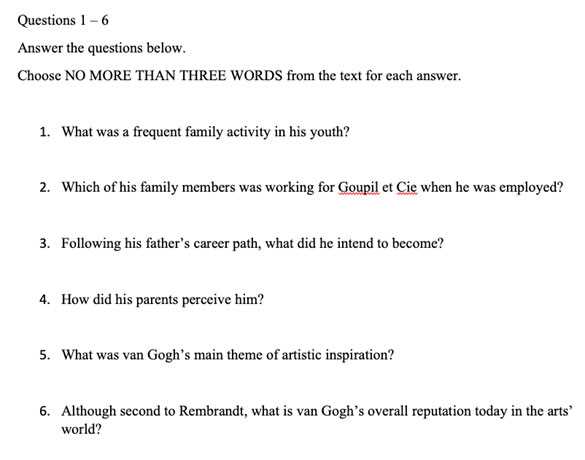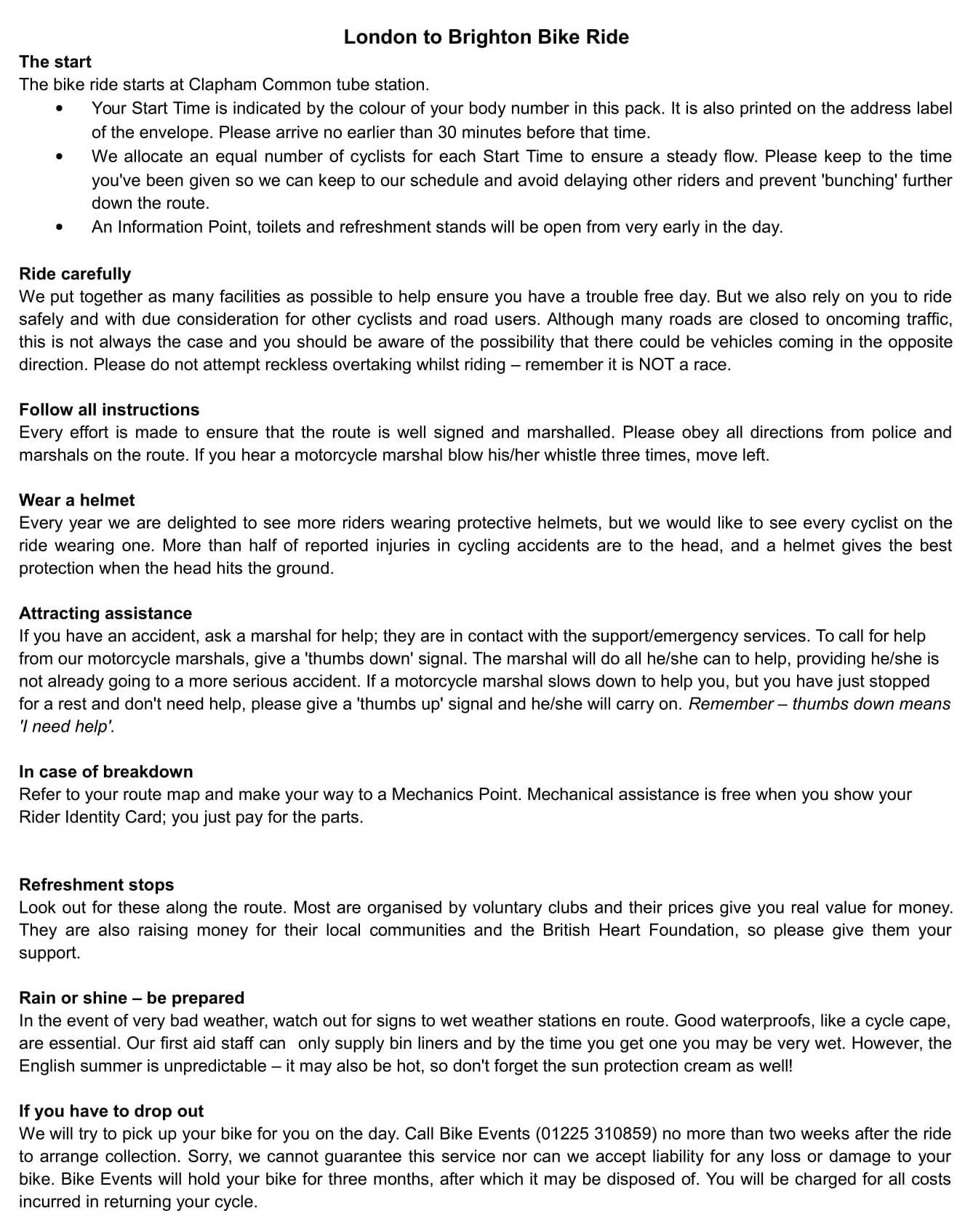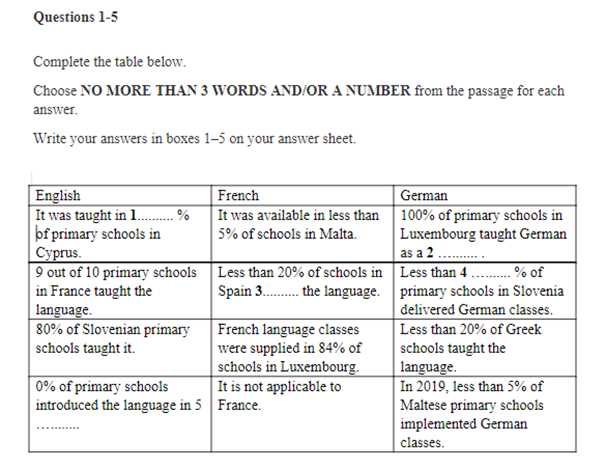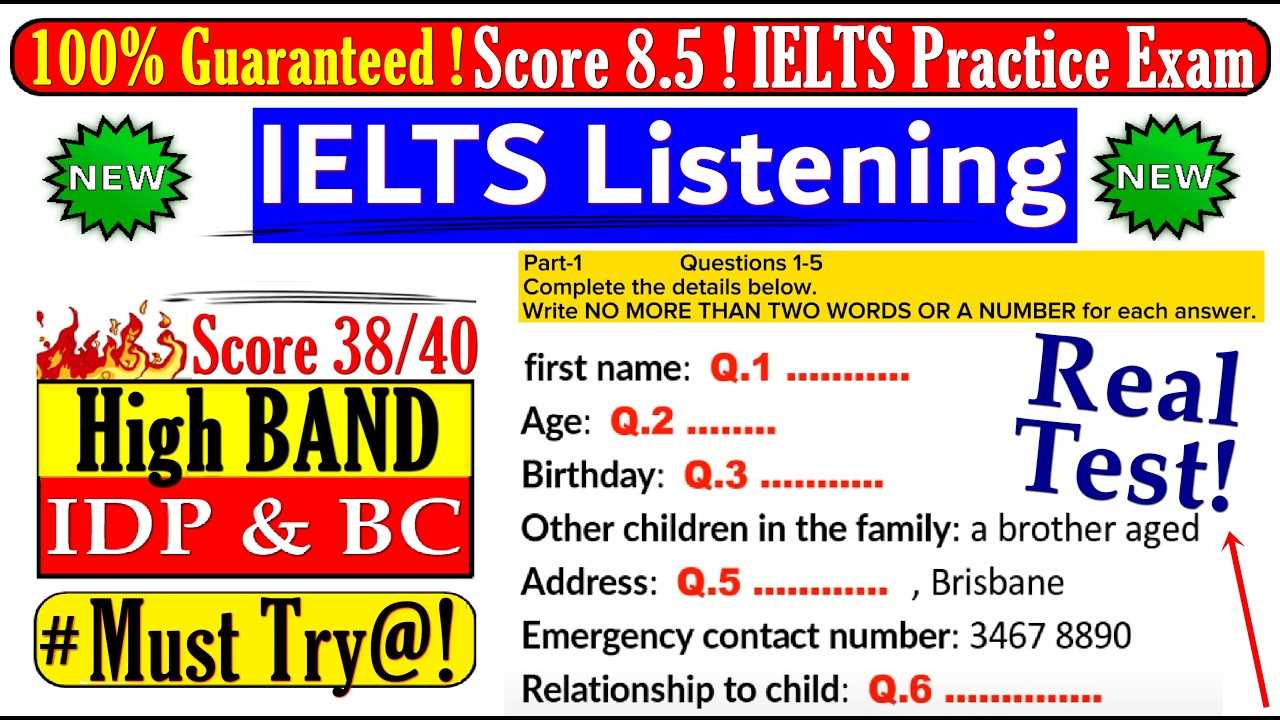
Preparing for a language proficiency test can be a challenging yet rewarding journey. Having the right tools and resources is essential to ensure a thorough understanding of the test structure and requirements. Practice tests serve as valuable aids in refining skills and building confidence.
Comprehensive question sets and detailed explanations play a key role in enhancing your performance. They allow you to familiarize yourself with diverse formats, improve time management, and identify areas that need further improvement.
By engaging regularly with realistic practice materials, you can measure your progress and boost your readiness for the final assessment. Explore resources that provide clear guidance and well-structured practice sessions for optimal results.
Effective Strategies for IELTS Preparation
Achieving success in a language assessment requires a combination of consistent effort and well-planned techniques. Understanding the structure of the test and focusing on key skill areas can significantly enhance your performance. Developing a tailored approach to practice ensures steady progress and boosts confidence.
Focus on Your Strengths and Weaknesses
Identifying areas where you excel and those that need improvement is essential for efficient preparation. Spend more time refining weaker skills while maintaining your strengths. For example, if writing is challenging, practice creating structured responses and review model solutions for better insights.
Incorporate Active Learning Techniques
Passive study methods often fall short when it comes to mastering complex tasks. Engage actively by simulating test scenarios, timing yourself, and analyzing your results. Pair this approach with targeted exercises that help you understand question formats and develop effective strategies for each section.
Consistency and focus are crucial. Commit to regular practice sessions and review your progress frequently. Utilizing these methods will help you approach the final test day fully prepared and confident.
Common Challenges in IELTS Practice Tests
As you prepare for a language proficiency test, several challenges can arise that may hinder your ability to perform at your best. These obstacles often stem from a lack of familiarity with the test structure, difficulty managing time, and confusion with certain question formats. Identifying these issues early and addressing them will help you improve your skills and confidence.
Time Management Struggles
One of the biggest challenges faced during practice sessions is managing time effectively. Many test-takers find it difficult to complete all tasks within the given time frame, often rushing through answers or leaving questions unfinished.
- Practice under strict time limits to simulate real testing conditions.
- Learn to prioritize tasks based on difficulty and importance.
- Work on improving speed without sacrificing accuracy in your responses.
Difficulty Understanding Complex Question Types
The variety of question formats in language tests can be overwhelming, especially if you are not fully prepared for the different styles of questioning. Misunderstanding the requirements of a question can lead to incorrect answers, even if you know the content well.
- Familiarize yourself with all question types to reduce confusion.
- Take time to carefully read the instructions for each section.
- Review your incorrect responses to learn how to approach similar questions in the future.
By addressing these challenges head-on, you can enhance your performance and approach your test day with greater ease and preparedness.
Tips for Improving Reading Accuracy
Achieving accuracy in reading tasks is crucial for performing well in language assessments. Whether you’re tackling short passages or longer articles, being able to comprehend the material quickly and precisely is key. Developing a strategy that focuses on understanding key details and inferring meaning will significantly boost your reading skills.
Develop Skimming and Scanning Techniques
Skimming and scanning are essential techniques that help you gather important information quickly. Skimming allows you to get the general idea of a passage, while scanning helps you locate specific details.
- Practice reading quickly to capture the main ideas of paragraphs without focusing on every word.
- Use scanning to find key facts, such as dates, names, or specific terms, in longer texts.
- Combine both techniques to improve speed and accuracy during timed practice.
Focus on Understanding Context
Context is vital when interpreting texts. Understanding the overall message of a passage will help you answer questions more accurately, even when dealing with unfamiliar vocabulary.
- Pay attention to surrounding sentences or paragraphs to better understand difficult words.
- Look for clues in the text, such as conjunctions, transitions, or repeated terms, to infer meaning.
- Review vocabulary regularly to expand your understanding of different contexts.
By practicing these strategies, you will become more efficient and accurate in reading comprehension tasks, leading to stronger results in your preparation.
Mastering Listening Skills for Success
To achieve success in language assessments, strong listening skills are crucial. The ability to accurately understand spoken information and respond appropriately is key to performing well in a variety of tasks. Focused practice and adopting specific listening strategies will significantly enhance your comprehension and response time.
Developing Active Listening Techniques
Active listening goes beyond just hearing words; it involves fully engaging with the audio material. This method allows you to capture essential details, follow conversations more effectively, and remember key information for later questions.
- Concentrate on the speaker’s message rather than just individual words.
- Use short notes to jot down main ideas and important facts during practice.
- Stay focused on the audio, avoiding distractions that can impact comprehension.
Improving Comprehension with Various Accents
Being exposed to different accents helps you adapt to various speech patterns, speeds, and pronunciations, making it easier to understand diverse speakers. This improves your overall listening comprehension, especially when you encounter unfamiliar voices.
- Listen to a variety of sources, such as podcasts, radio programs, and interviews, featuring different speakers.
- Focus on recognizing key phrases and words in fast-paced or heavily accented speech.
- Pay attention to contextual clues to help interpret unfamiliar or unclear words.
With consistent practice and the application of these listening strategies, you will improve both your understanding and ability to respond to spoken material, setting yourself up for success.
Key Techniques for Writing Task 1
Successfully completing writing tasks requires a clear approach and efficient techniques. Task 1 typically involves interpreting data and presenting it in a structured, coherent format. Developing the ability to accurately describe visual information while maintaining clarity and precision is essential.
Understand the Data
Before you begin writing, it’s crucial to fully understand the data presented. Whether it’s a graph, chart, or diagram, take time to analyze the key trends, comparisons, and changes.
- Identify the most important features in the visual data.
- Look for significant trends, differences, or similarities between elements.
- Pay attention to time periods or categories that could influence the interpretation.
Structure Your Response Effectively
A well-organized response enhances readability and ensures your points are clear. Focus on providing an introduction, an overview, and clear details that describe the data accurately.
- Start with a brief introduction summarizing the information.
- Provide a general overview of the key trends and patterns.
- Use specific data points to support your analysis and highlight key differences.
By applying these techniques, you can present a well-structured and clear response that effectively addresses the requirements of the task.
How to Ace Writing Task 2
To succeed in writing tasks that involve presenting and supporting an argument, it’s essential to structure your response effectively. A clear approach, logical flow, and well-supported ideas are key to delivering a strong performance. With the right techniques, you can master the task and ensure your ideas are communicated clearly and persuasively.
Understand the Question Thoroughly
The first step is to carefully read and understand the prompt. Ensure you identify what type of question you are addressing, such as an opinion, discussion, or problem-solution type. Misinterpreting the question can lead to irrelevant responses, so take time to analyze it.
- Highlight key terms in the question to ensure full understanding.
- Break down the prompt to understand its specific requirements.
- Clarify any unclear parts before beginning your response.
Plan Before You Write
Before starting your essay, make a plan. A structured outline helps organize your ideas and ensures a logical flow throughout your essay. This will save you time and keep your argument focused.
- Create an introduction that outlines your position or approach.
- Develop each paragraph around a specific point that supports your overall argument.
- Conclude by summarizing your main points and restating your position clearly.
Use Clear and Concise Language
Clarity and precision are crucial when presenting your ideas. Avoid unnecessary complexity and focus on expressing your arguments in a straightforward manner.
- Use simple, direct sentences to convey your message.
- Support each point with relevant examples and explanations.
- Avoid repetition to keep your writing engaging and concise.
By carefully planning your response and following these strategies, you can effectively showcase your writing abilities and present a well-supported argument.
Practical Speaking Test Tips
When it comes to verbal assessments, effective communication is key. Preparing for speaking tasks involves not only practicing your language skills but also familiarizing yourself with the test format and developing strategies to showcase your fluency and coherence. By focusing on practical tips, you can improve your performance and gain confidence during your assessment.
First, it’s crucial to speak clearly and confidently. Focus on maintaining a steady pace and avoid rushing through your answers. Speaking too quickly can lead to unclear articulation, while speaking too slowly may affect your overall fluency.
Next, ensure that your responses are structured and coherent. It’s important to provide detailed answers instead of simple yes or no responses. Elaborate on your opinions and give examples when necessary, demonstrating your ability to organize and express ideas effectively.
Another useful strategy is to practice active listening. Pay close attention to the examiner’s questions and make sure you fully understand what is being asked before responding. If you’re unsure, don’t hesitate to ask for clarification rather than giving an incomplete answer.
Finally, stay calm and relaxed during the test. Nervousness can affect your performance, so take a deep breath and focus on communicating naturally. Practicing regularly with a partner or recording your responses can also help you gain more comfort in speaking under test conditions.
Understanding Band Descriptors

Band descriptors are essential for assessing performance across various skills in language proficiency assessments. These descriptors provide clear guidelines for examiners to evaluate candidates’ abilities in different areas, such as speaking, listening, reading, and writing. They offer insight into the criteria used to assign a score and help candidates understand what is expected at each level.
Each skill is judged based on several key components, including coherence, fluency, grammar, and vocabulary range. By understanding the criteria for each band score, candidates can focus their preparation efforts and improve specific areas of weakness. The band descriptors provide detailed benchmarks that outline what is expected from candidates at different levels of proficiency.
| Band Score | Speaking | Writing | Listening | Reading |
|---|---|---|---|---|
| 9 | Fluent, clear, and natural communication | Well-organized and fully developed responses | Accurate understanding of a wide range of information | Complete and accurate comprehension of complex texts |
| 8 | Fluent with occasional errors | Clear and logically developed ideas | Strong understanding with few errors | Generally accurate, some complex ideas are challenging |
| 7 | Clear communication with some hesitation | Well-developed ideas with minor errors | Good understanding, occasional misinterpretation | Understanding of most content with some challenges |
| 6 | Generally clear but frequent errors | Clear ideas but some lack of development | Generally accurate, occasional misunderstanding | Some difficulty with understanding complex texts |
| 5 | Limited fluency, with noticeable gaps | Basic ideas, but with insufficient development | Basic understanding, often errors in detail | Challenges in understanding longer and more complex texts |
By familiarizing yourself with these descriptors, you can adjust your study approach to target the specific skills that need improvement and aim for higher proficiency levels.
Time Management Strategies for Exam Day
Effective time management on the day of the assessment is crucial to ensure that all sections are completed to the best of your ability. Having a clear plan in place can help reduce stress, maximize performance, and avoid rushing through any tasks. By following a strategic approach, you can allocate your time efficiently, allowing you to focus on each task without feeling overwhelmed.
Plan Your Time for Each Section

Start by reviewing the overall structure of the test. Understand the amount of time allocated to each section and determine how long you should spend on each task. Prioritize sections based on your strengths and weaknesses, allocating extra time to areas where you may need more focus.
Practice Under Time Constraints
Before the test, simulate the real conditions by practicing under timed constraints. This helps you get used to the pace required to complete each task. The more familiar you are with the timing, the more confident you will feel on the actual day.
- Allocate specific minutes per question or task.
- Keep track of the clock regularly to avoid spending too much time on any one section.
- If you’re stuck on a question, move on and return to it later if possible.
- Ensure that you have a few minutes at the end to review your work, especially for writing or speaking tasks.
By practicing time management, you can maintain a steady pace throughout the assessment and complete all sections confidently, without the need for unnecessary last-minute rushes.
Importance of Reviewing Correct Answers
After completing an assessment, taking the time to carefully review your responses is essential for reinforcing your understanding and ensuring accuracy. This process allows you to identify areas where mistakes may have been made, and it provides the opportunity to solidify the knowledge you’ve gained. A well-thought-out review can also help you avoid repeating the same errors in the future, improving your performance in subsequent evaluations.
Identifying Mistakes
Reviewing your work gives you a chance to spot any mistakes or misinterpretations that may have occurred during the test. By understanding why a particular answer was incorrect, you can better grasp the underlying concepts and avoid similar errors in future attempts. This step is key to continuous improvement and mastery of the material.
Building Confidence and Learning
Going over correct responses not only helps reinforce your knowledge but also builds confidence. When you see that you are consistently getting certain questions right, it serves as positive feedback, affirming your understanding of the subject. It also offers a chance to learn from your successes, reinforcing effective strategies that worked well during the test.
- Take time to reflect on why each answer was correct or incorrect.
- Focus on the reasoning behind each solution to deepen your comprehension.
- Revisit topics where you struggled, and actively work on improving those areas.
Incorporating regular review sessions into your study routine can significantly enhance your performance by helping you internalize key concepts and strategies for future assessments.
How to Analyze Answer Sheets Effectively
Reviewing completed response sheets is a crucial part of improving performance. By carefully analyzing the results, you can identify patterns in your responses, assess areas of strength, and pinpoint weaknesses. This practice not only enhances your learning but also guides you toward better strategies for tackling future challenges.
Focus on Accuracy and Structure
When analyzing your completed responses, start by evaluating the correctness of each answer. Focus on understanding why specific answers were correct, and also consider why others were incorrect. Pay close attention to how your responses were structured–did you provide sufficient explanations, or were any points missed? Recognizing these details can help refine your approach to presenting information clearly and logically.
Identify Common Mistakes and Areas for Improvement
Look for recurring errors across different sections. These may point to gaps in your knowledge or areas where your understanding needs more attention. Pay special attention to common mistakes, such as misunderstanding instructions or overlooking key details. Once you’ve identified these patterns, create a targeted study plan to address those specific weaknesses.
- Examine both correct and incorrect responses for deeper insight.
- Break down each question to ensure clarity in reasoning.
- Use your analysis to develop focused practice exercises.
By consistently reviewing your performance, you can refine your skills, boost confidence, and ensure more accurate responses in future tasks.
Benefits of Practicing Past Tests
Engaging in regular practice with previous assessments provides valuable insights into the structure and types of tasks you will encounter. This method not only familiarizes you with the format but also helps you understand the expectations and time management required. Through consistent repetition, you can refine your abilities and boost confidence for the actual event.
Improved Time Management
Practicing past tests under timed conditions allows you to develop essential time management skills. By replicating the pressure of real situations, you can assess how much time to allocate for each section, ensuring that you complete the tasks efficiently. Over time, this helps you avoid rushing through questions and minimizes the chances of leaving tasks unfinished.
Increased Familiarity with Common Question Types
By reviewing past assessments, you become familiar with recurring question formats. Recognizing these patterns enables you to approach each task with confidence, knowing what to expect. This familiarity reduces anxiety and allows you to concentrate on providing thoughtful responses rather than being surprised by unfamiliar tasks.
- Boosts confidence through regular exposure to similar challenges.
- Enhances ability to identify key information in questions.
- Refines test-taking strategies by practicing under pressure.
Ultimately, practicing past tests helps you to understand the key components of each section, allowing you to approach them strategically and improve your overall performance.
Role of Vocabulary in Success
Mastering a diverse vocabulary is a key element for excelling in language proficiency tasks. A broad vocabulary allows for clearer expression, better understanding, and more precise answers, which is crucial for achieving a high score. It is not only about knowing more words, but also about using them effectively in context to demonstrate language competency.
Improved Communication
A strong vocabulary enhances your ability to convey ideas and express thoughts coherently. The more words you know, the better you can articulate your point of view and respond to questions in a natural and fluent manner. This enables you to engage fully in both written and spoken components.
Contextual Understanding
Understanding the nuances of vocabulary helps you to interpret reading passages and listen to audio clips more effectively. The ability to recognize subtle differences in meaning can significantly improve your comprehension skills and overall accuracy during tasks.
| Benefit | Explanation |
|---|---|
| Clarity in Expression | Allows you to use precise words, minimizing ambiguity and making communication more efficient. |
| Enhanced Reading Comprehension | Helps in understanding complex texts, as recognizing varied vocabulary reduces confusion. |
| Fluency in Speaking | Enables you to respond smoothly and naturally, which is essential in timed speaking tasks. |
Developing a strong vocabulary is a strategic way to elevate your performance, allowing you to confidently approach all sections of the test and show language proficiency at its best.
Effective Ways to Reduce Test Anxiety
Feeling anxious before or during an assessment can hinder performance. However, there are several strategies that can help calm nerves and foster a sense of control. By practicing these techniques, individuals can manage stress levels, improve focus, and perform better in high-pressure situations.
Breathing Techniques
Deep breathing exercises can significantly reduce feelings of anxiety. Slow, controlled breaths help calm the nervous system and refocus the mind, allowing for better concentration during the task.
Visualization
Positive visualization is another helpful method. Imagine yourself succeeding and feeling calm during the assessment. This mental rehearsal can increase confidence and create a more relaxed mindset.
Preparation and Practice
Feeling prepared can significantly reduce stress. By practicing beforehand, you can build confidence and familiarize yourself with the test format. Knowing what to expect minimizes surprises and can ease anxiety.
| Method | Benefit |
|---|---|
| Deep Breathing | Reduces stress, helps maintain focus, and promotes relaxation. |
| Visualization | Boosts confidence, creates a positive mindset, and calms nerves. |
| Practice | Improves familiarity with the task, reducing uncertainty and stress. |
By integrating these techniques into your routine, you can manage test-related stress and approach each challenge with greater composure and clarity.
Adapting to Different Question Formats
Being able to adjust to various question styles is essential for success in any assessment. Each format requires a unique approach, and understanding these differences can help improve both performance and efficiency. Flexibility in responding to questions ensures that you can handle different types of challenges with ease.
Multiple-Choice Questions
For multiple-choice questions, it’s important to carefully read all options before making a selection. Often, two answers may appear similar, so paying attention to the wording and specific details will help in identifying the correct choice. Eliminate clearly incorrect answers first, then focus on the remaining options.
Short Answer Questions
In short answer questions, be concise and to the point. It’s important to provide only the information asked for, avoiding unnecessary details. Read the question carefully to understand the required response and make sure your answer addresses all parts of it.
Essay-Type Questions
Essay questions require a more structured response. Start by outlining your ideas to organize your thoughts. Each paragraph should focus on a specific point, and your introduction and conclusion should frame your argument effectively. Use relevant examples to support your views and ensure your answer is clear and well-developed.
Matching Questions
When faced with matching questions, read through both lists carefully. Look for keywords or phrases in the prompts that correlate with the options. It’s often helpful to start with the easiest matches first to narrow down the possibilities for the more challenging ones.
By practicing different question formats and developing strategies for each, you can improve your ability to adapt and respond effectively in any test scenario.
Learning from Model Responses
Studying well-constructed responses can provide valuable insights into how to effectively approach different types of questions. These examples serve as a guide to understand the key elements of a strong answer, including structure, clarity, and relevance. By analyzing model responses, you can identify the techniques and strategies that contribute to a high-quality response.
Structure and Organization
A clear and logical structure is essential in any response. Observing how model responses are organized helps you understand how to present ideas in a coherent manner. Pay attention to how the introduction sets the context, the body elaborates on the points, and the conclusion reinforces the main argument. Replicating this structure in your own answers will make them easier to follow and more effective.
Language and Tone

Model responses often use precise and appropriate language. By reviewing them, you can expand your vocabulary and learn how to communicate ideas more efficiently. Notice how complex ideas are expressed clearly and concisely. This helps you understand how to balance formality and readability, ensuring your response is both professional and accessible.
Developing Strong Arguments
Model answers demonstrate how to build strong, well-supported arguments. Look at how evidence or examples are used to back up claims and strengthen the response. Analyzing these examples teaches you how to approach questions from different angles and ensures your own answers are convincing and well-supported.
By regularly reviewing model responses, you can refine your skills and gain a deeper understanding of what constitutes an excellent answer. This practice will ultimately enhance your ability to craft well-thought-out responses on your own.
Choosing Reliable Practice Resources
Selecting the right materials for practice is crucial for effective preparation. The resources you use should be accurate, up-to-date, and designed to mimic real testing conditions. Whether you’re studying online or using physical books, it’s important to ensure the quality and relevance of the materials to achieve the best results.
Criteria for Selecting Resources

When choosing practice materials, consider the following factors:
- Accuracy: Make sure the content aligns with the actual test format, including the types of questions, time limits, and scoring criteria.
- Comprehensive Coverage: Choose resources that cover all sections of the test, offering practice for different skills, such as reading, writing, listening, and speaking.
- Feedback and Explanations: Select materials that provide detailed feedback and explanations for correct and incorrect answers to help you understand the reasoning behind each response.
- Quality of Content: Avoid poorly written or misleading practice questions. Ensure the resources are from reputable publishers or established educational institutions.
Recommended Sources
Some reliable sources to consider for practice include:
- Official test preparation books and websites from recognized organizations.
- Online platforms offering practice tests, often with interactive features and scoring systems.
- Study guides that provide detailed breakdowns of question types and strategies.
By carefully selecting quality materials, you can ensure your practice sessions are both productive and aligned with the actual test expectations. This strategic approach to studying will increase your chances of success.